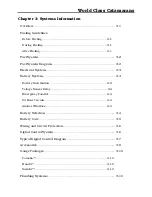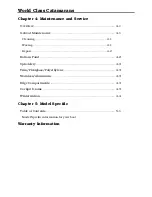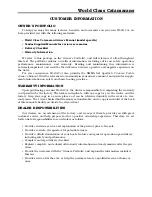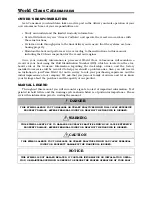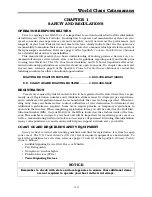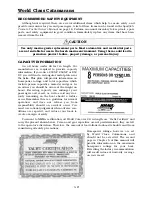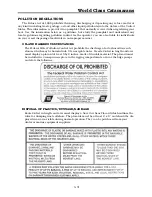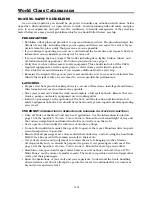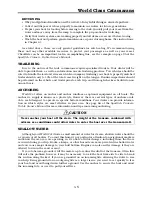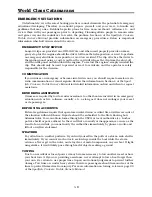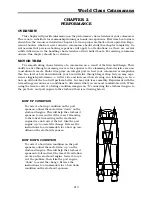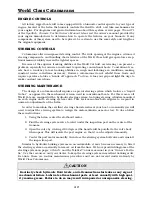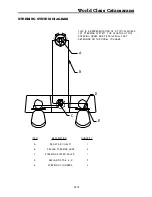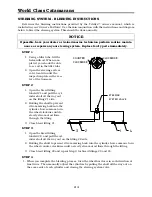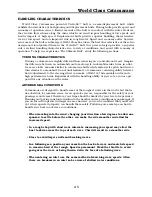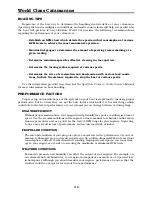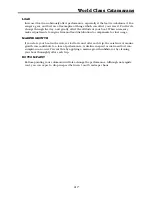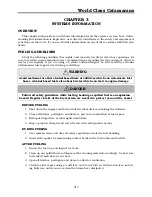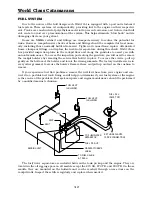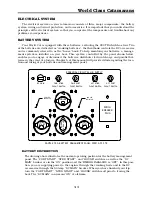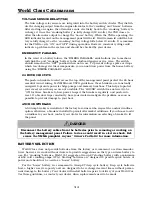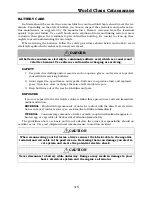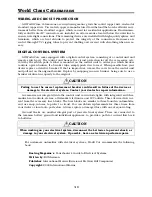
World Class Catamarans
1-5
RETURNING
•
Obey navigational markers and be aware of any tidal changes since departure.
• Collect and dispose of refuse properly to maintain our waters for future generations.
• Prepare your boat for loading before moving to the dock. Quickly pull your vessel from the
water and move away from the ramp to complete the preparation for trailering.
• Verify that trailer systems are working properly and all items are secured before leaving.
• Wash the boat and perform general maintenance, upon returning home. (See instructions
in Chapter 4).
As stated above, these are only general guidelines for safe boating. We recommend using
these and any other available resources to protect your passengers as well as your vessel.
Checklists can be an important tool in accomplishing this, see the example on page 35 of the
Sportfish, Cruisers, Yachts Owner’s Manual.
TRAILERING
Due to the nature of the hull, catamarans require specialized trailers. Your dealer will be
able to provide them, as well as, information on safe trailering practices. Tow vehicles should be
rated to handle the load and stresses which accompany trailering your boat. A properly matched
trailer should carry 5-10% of the total vessel weight on the tongue. Routine inspections should
be performed on the vehicle and trailer prior to each trip, and thorough checks scheduled on an
annual basis.
ANCHORING
World Cat offers an anchor and anchor windlass as optional equipment on all boats. The
anchor we supply is known as a plow style. However, there are several types of anchors avail-
able, each designed to operate in specific bottom conditions. Your dealer can provide informa-
tion on which styles are most effective in your area. See page 46 of the
Sportfish, Cruisers,
Yachts Owner’s Manual
for more information and tips concerning anchoring
.
SHALLOW WATER
Although your World Cat draws a small amount of water for its size, shallow water should be
a concern of all boaters. To avoid this hazard, pay particular attention to navigational markers
and know the area you are operating in. Be aware of tidal changes, including those that have
occurred during your trip. Rocks, stumps, or other hazards are more prevalent in shallow water
and can cause major damage to your hull bottom. Engines can also suffer damage if they are
allowed to run in the sand or mud.
If you do become grounded, tilt the motors up to reduce the draft at the transom. Often this
will solve the problem; however, it may be necessary to rock the boat from side to side to break
the suction along the keel. If you are grounded on an incoming tide, allowing the water to rise
can help. Being grounded on an outgoing tide is a larger issue, you need to act quickly to free
your boat and avoid being driven further aground. Use the anchor to secure the boat and await
the incoming tide, or use it to pull yourself free.
! CAUTION
Never anchor your boat off the stern. The weight at the transom, combined with
adverse sea conditions could allow water to enter the boat over the transom wall.




